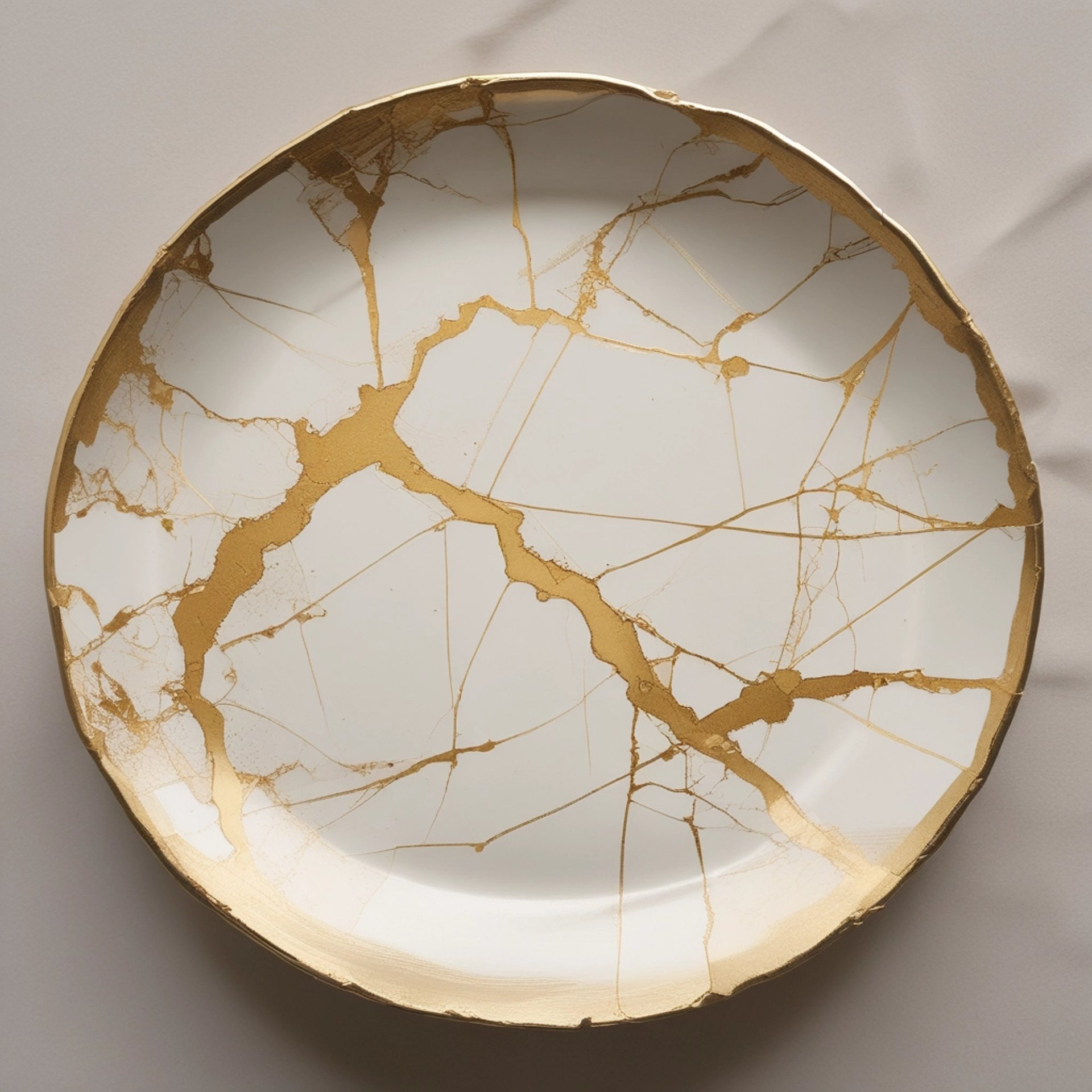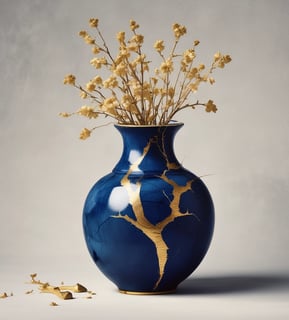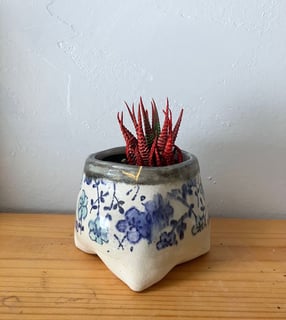
The story of Kintsugi
CERAMIC HISTORY
2/24/20253 min read


Kintsugi is believed to have originated in the late 15th century during Japan’s Muromachi period. The story goes that a Japanese shogun, Ashikaga Yoshimasa, sent a damaged Chinese tea bowl to China for repairs. When the bowl was returned, it had been repaired in a crude and unsightly way, using metal staples. Dissatisfied with the result, Yoshimasa’s craftsmen began experimenting with their own methods of repair, eventually using gold or silver to fuse the broken pieces together, rather than trying to hide the cracks.
The result was a stunning transformation. The breaks were no longer something to be ashamed of, but became part of the bowl’s story, its history. The repaired bowl became a symbol of strength, resilience, and beauty—a lesson in embracing flaws and imperfections.
Origins of Kintsugi
The Philosophy Behind Kintsugi
At its heart, Kintsugi is more than just a method of repair—it is an art form that carries profound philosophical meaning. In Japanese culture, the concept of wabi-sabi celebrates the transient nature of life, the impermanence of things, and the acceptance of imperfections. Kintsugi embodies this philosophy by revealing the beauty in the cracks and flaws, rather than concealing them.
Instead of seeing the breaks as something to hide, Kintsugi elevates them. The gold seams emphasize the history of the object and the journey it has undergone. The bowl’s past is visible, and its imperfections tell a story of resilience and transformation. Through Kintsugi, an object is not just repaired—it is made more unique and valuable.
Kintsugi and the Cycle of Life
In many ways, Kintsugi parallels the human experience. Just as objects become damaged over time, so too do we face challenges and scars throughout our lives. Kintsugi teaches us that these experiences, even the painful ones, can be seen as part of our unique story, contributing to who we are and how we grow. Instead of trying to hide our flaws or imperfections, Kintsugi encourages us to embrace them and honor the process of healing and renewal.
The Practice of Kintsugi
The process of Kintsugi involves carefully reassembling the broken pieces of pottery, then using a lacquer or resin that is mixed with powdered gold, silver, or platinum to bond the fragments together. The final result often leaves stunning golden veins or silver lines where the breaks once were, which makes the repaired piece more beautiful and valuable than the original.
Each Kintsugi repair is unique, as it’s based on the specific cracks and breaks of the object. This unpredictability makes every piece a one-of-a-kind creation. The art of Kintsugi requires patience, skill, and an understanding of the object’s history, as each repair tells a personal and intimate story.
Kintsugi in Modern Times
While Kintsugi began as a method of repairing pottery, it has since become a metaphor for healing, self-acceptance, and growth. The art form has gained popularity outside of Japan and is now widely recognized in Western culture as a symbol of resilience.
In the modern world, Kintsugi’s message resonates in many areas of life. It’s used in therapy, literature, and even in art as a way to explore themes of recovery and transformation. Kintsugi has become a reminder that life’s challenges don’t have to define us negatively. Rather, like the repaired pottery, we can emerge from our difficulties with a deeper sense of beauty and strength.
Last word...
Kintsugi is a powerful and poignant practice that invites us to see the beauty in life’s cracks and imperfections. It is a celebration of the process of mending, both for objects and for ourselves. By embracing the flaws and the breaks, we can create something even more beautiful and meaningful.
In the context of your pottery, Kintsugi can serve as a beautiful metaphor for the pieces you create. Each crack or chip in pottery can tell a story, and in the case of Kintsugi, it is a story that is enhanced and celebrated with gold. It’s a reminder that even the broken or imperfect can be transformed into something extraordinary.






Fresh from the kiln! Find out when new ceramic pieces are ready to be admired.
Bonita Farm © 2025. All rights reserved.
